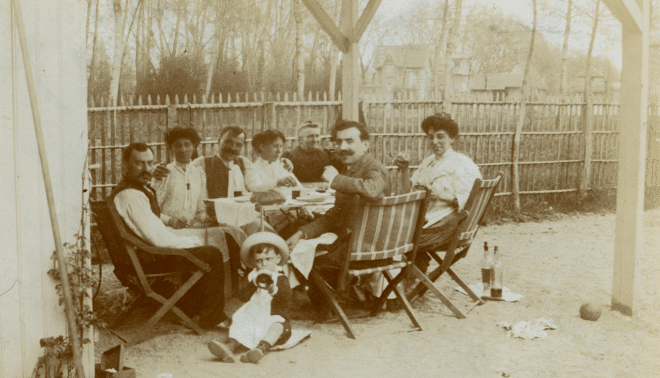Sign up for the Family Tree Newsletter! Plus, you’ll receive our 10 Essential Genealogy Research Forms PDF as a special thank you.
Get Your Free Genealogy Forms
"*" indicates required fields

Your family history begins with your own memories—and what you remember can serve as a useful springboard for learning more about your whole family’s history, connecting you emotionally to past generations.
Your memories also can provide critical research clues for genealogy research. When’s the last time you mined your own memories for details you can use to research your family tree?
These three focuses will help dive into your memories:
1. People
Who do you recall—even vaguely—in connection with your family? The neighbors across the street from your grandparents? Your mother’s sorority sister? Dad’s business partner? Memories of people can lead to more memories, and even to research resources.Mention your grandparents’ neighbors—the ones who always came to play cards—to your cousins or an aunt and see what stories come to light. Does anyone know how they came to be good friends? How did your grandparents act around their friends? What else do relatives recall about the neighborhood? Did anyone stay in contact with that neighbor’s family?
If Mom’s sorority sister is still alive, her memories or memorabilia may give you fresh perspective on your mother’s younger years. Recalling the name of the sorority can lead to its records, photo collections and more insight into your mother’s time at college. A similar line of thinking about a father’s business partner may lead you to that family’s recollections, business records, ads or listings in city directories, or news articles about your father or his business partner.
2. Places
What places were part of your childhood, or your parents’ lives? Think about where you (or they) went for family gatherings, and about family cemeteries, churches, funeral homes, schools, places of business, vacation destinations and other locations that figure in family memories. Consider your old neighborhood, your grandparents’ ranch or farm, or your mother’s description of her childhood home.What can these memories tell you about your family history? Mention them to relatives and see what recollections they prompt. Look for Sanborn or other maps of old neighborhoods. See if you can find old images of the cottages at Lake Erie. And definitely look for records connected with these places, such as membership records for Grandma’s Methodist church or burial information from a cemetery or funeral home.Use the same line of thinking to explore the “researchability” of other memories: a sporting event you attended with your dad (find news coverage to flesh out the memory), or an annual trip to the state fair to see Grandpa’s prize-winning livestock (look for state fair award lists and photos).
3. Objects
The “stuff” you associate with your family, such as an automobile or household appliance, provides another piece of the family puzzle that can jog memories. Did your mother use only one brand of detergent? Was your brother obsessed with Superman comics? These details provide insight into daily lives, personalities and values. Memorabilia such as photos and heirlooms can further inspire your memory of people and places. What pictures or descriptions can you find, and what meaning did they have? Share these and other treasured family artifacts with relatives—you never know what they might remember.
My book, Story of My Life, can help you remember and document memories of the people, places, events and objects associated with your family history. The book provides a place for you to organize your thoughts and tie them to a certain time, place or person.




